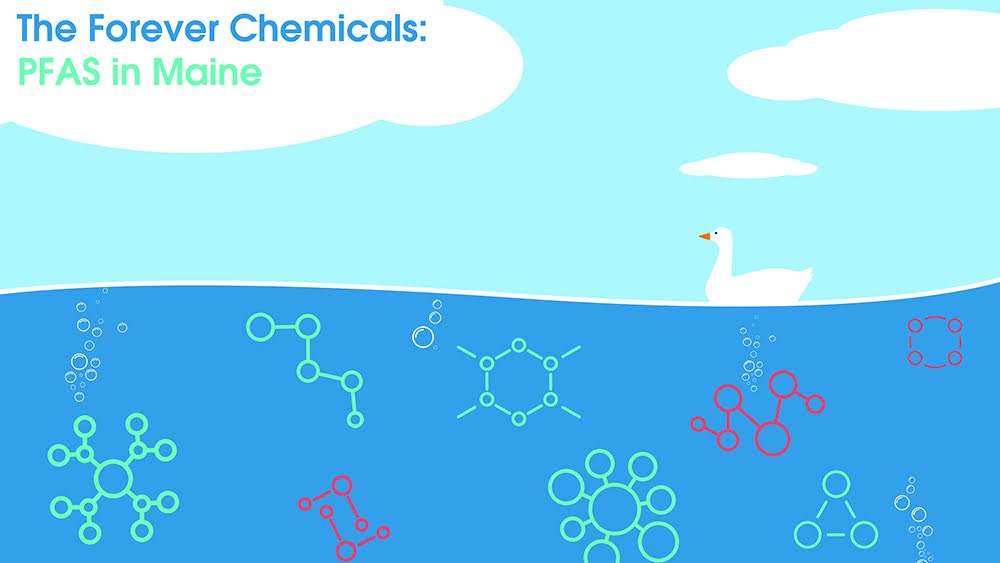On Monday, April 4, Dr. Onur Apul, Dr. Dianne Kopec, Dr. Caroline Noblet and John Peckenham gave their talk, “The Forever Chemical: PFAS in Maine.” Apul is an assistant professor in civil and environmental engineering at the University of Maine. Kopec is a research fellow at the Senator George J. Mitchell Center for Sustainability Solutions. Noblet is an associate professor in the school of economics at UMaine. Peckenham is a research associate at the Mitchell Center. Together they discussed how PFA chemicals have been in commercial products for over sixty years but only twenty years ago did researchers start analyzing how these substances affect the environment.
“What a deal we made with the devil! We traded stain fabric for a global environmental and world public health crisis,” Apul said.
Man made chemicals like PFAS have been used in consumer products industry-wide since the 1950s, and are commonly found in items such as ponchos and styrofoam.
“Everybody likes to eat. Some people like to cook. Nobody likes to clean up, so teflon pans were a really big hit,” Kopec said. “But then PFAS also moved into your food. It moved into your popcorn from your microwave popcorn bags. It moved into your food from your takeout containers. So this is why we care that the PFAS are moving into your food.”
In Maine, these PFAS have contaminated the well water and some dairy farms, which has led to the state of Maine trying to figure out how to deal with this problem. The issue with water contamination is how it affects the Earth’s water cycle. For instance, manufacturing and the industrial use of PFAS, as well as the PFAS use by the general population, creates atmospheric PFAS emissions. This then becomes precipitation that affects private wells and drinking water as well as agriculture. This “Forever Cycle” of PFAS is continued through the food web as animals drink the water, and fish swim in contaminated water. People then eat these animals, transferring the PFAS into their bodies.
“We call PFAS forever chemicals because of its circularity in the environment,” Apul said.
Next, the researchers discussed if nanomaterials can be used to address the PFAS crisis. Removal strategies, both destructive and non-destructive methods, are discussed to break down the chemical. After explaining the potential options for removing these chemicals, they discussed other PFAS Removal Technologies, specifically Granular Activated Carbon, as well as analyzing if these chemicals can permeate landfill liners and soil remediation of PFAS in biowastes treated soil.
“If you had a sandbox in your backyard, and if you had it polluted with one glass of motor oil in it, how do you even clean it? Do you take it out? Do you treat it inside? So the general approach here is either in situ or executed treatment approaches. Executed meaning that you excavate all the soil put on to trucks. Go to an off-site facility, wash the soil treated, do whatever it takes, and bring it back, in situ meaning that you use water, you use microbes, you use chemicals to pump down water, column or soil column and try to try to purify the soil,” Apul said.
For soil remediation, this would involve minimal use of PFAS products and advanced treatment technologies for source reduction; cyclic process with lesser soil invasion and minimal transport costs for soil flushing and washing; uptake and translocation of PFAS into above ground plant parts for phyto-remediation; stabilizing the soil with sorbent to restrict the movement of PFAS for immobilization; and thermal, oxidative, biological, and electron beam treatments for PFAS destruction.








